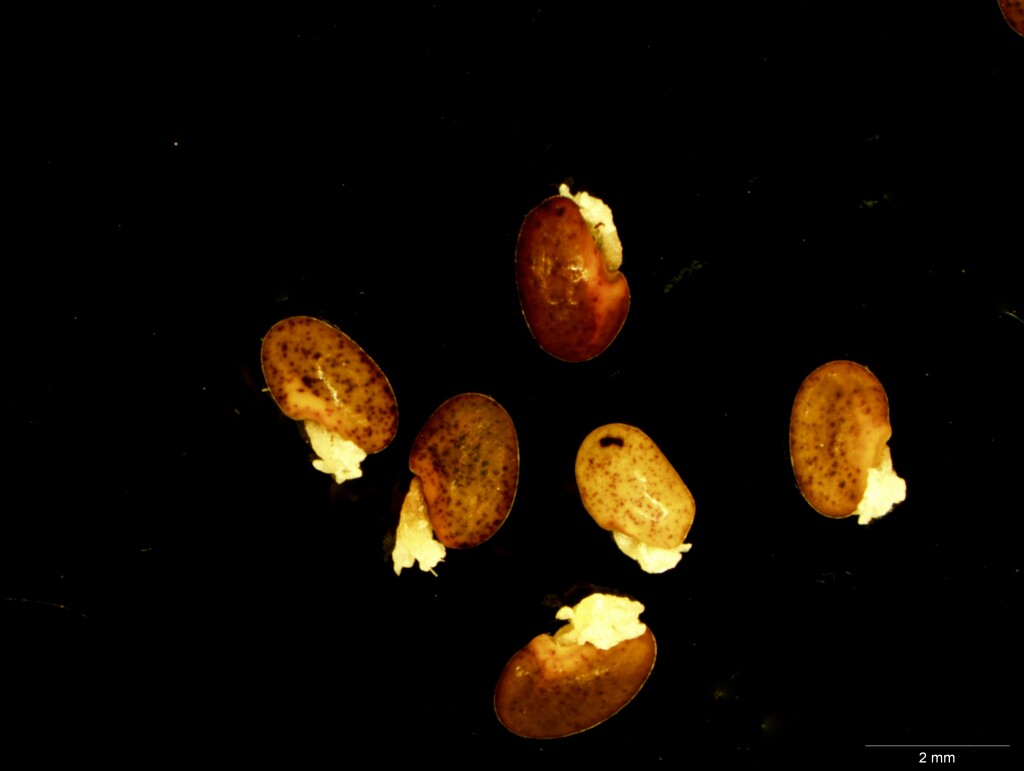Pultenaea williamsonii
Maiden Highland Bush-peaOpen, semi-prostrate shrub, branches lax, trailing or weakly ascending, to 70 cm long; stems terete with a few appressed, pale hairs when young, soon glabrous. Leaves alternate, elliptic to obovate 7–30 mm (mostly c. 20 mm) long, 2–8 mm wide; apex obtuse, terminating in a short, fragile mucro; upper surface glabrous, darker than lower; lower surface with sparse, pale appressed hairs; margin slightly recurved; stipules 3–7 mm long, light to mid brown, papery in texture. Inflorescence a head of 5–15 flowers; bracts 5–7 mm long, trifid at tip, central lobe covered with pale hairs, much narrower than outer lobes, all lobes tapered to slender, fragile tips; calyx 5–6 mm long, covered with white or pale golden hairs; bracteoles attached 0–0.5 mm from base of calyx tube, boat-shaped, 3.5–5 mm long, 1.5–2 mm wide, hairy along keel; standard 6–7 mm wide; ovary and base of style densely covered with pale hairs. Pod flat, lower half enclosed by calyx. Flowers Nov.–Dec.
NIS, HSF, HNF, VAlp. Occasional around margins of swamps and adjacent to mountain forest in the Strathbogie Range, near Eildon, Wonnangatta Station, and in the far northeast.
Corrick, M.G. (1996). Pultenaea. In: Walsh, N.G.; Entwisle, T.J., Flora of Victoria Vol. 3, Dicotyledons Winteraceae to Myrtaceae, pp. 765–793. Inkata Press, Melbourne.
 Spinning
Spinning